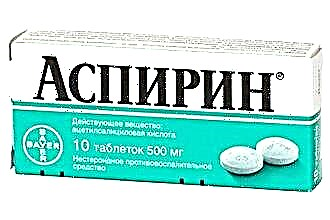Many people know the expression "popping over the ear", which means an annoying interlocutor who loudly expresses his thoughts. However, there is also another crackle - in the ear itself, which sometimes does not disappear even in complete silence. Although this acoustic sensation is noted at times even in healthy people, in the pathological process it acquires a persistent obsessive character. The concentration of the patient's attention on an unpleasant sound leads to psychological discomfort. In addition, if the crackle is a symptom of the disease, treatment is necessary, moreover, complex, aimed at eliminating the primary cause. Therefore, you should figure out why the ear is cracking and how to act if a crackling occurs.
Crackling as normal
Crackling in the ear cannot be considered a symptom typical of only one specific pathology. It sometimes appears even in the absence of diseases - for example, if the patient was suddenly pointed out the likelihood of such a symptom, and he suddenly noticed that his ear creaks. It is possible to detect a crackling in the ear that is not associated with adverse changes during:
- swallowing saliva;
- yawning;
- removal of the earphones - "pills".
It's important to pay attention to your overall well-being. If the crackling in the ears is quiet, appears periodically and practically does not bother the patient, it can be considered as a variant of the norm. However, if you experience other symptoms - for example, ear congestion, hearing loss - you need to think about what provokes a creak in your ear.
Sometimes you can find the assumption that the causes of crackling in the ear are due to the accumulation of sulfur and the formation of a sulfur plug. This is really so - a large amount of sulfur masses when water gets into the ear (during bathing, swimming) can provoke a "sound background". In this case, the noise has a different tonality. Although sulfuric plug is unacceptable to be called a normal phenomenon, it also cannot be isolated as an independent disease. The presence of an accumulation of sulfur is easy to confirm during a face-to-face examination in the otolaryngologist's office.
For some people, noise occurs when the sound is loud. Cracking in the ear is often triggered by wearing headphones, constantly listening to loud music. Although the noise subsequently disappears, the adverse effect of earphones on hearing cannot be denied.
"Sound background" can be a harbinger of changes in hearing acuity.
Crackle and disease
There are many probable causes of cracking in the ears associated with pathological changes. They can be represented in the list:
- Chronic adenoiditis.
- Chronic rhinitis, sinusitis.
- Chronic rhinopharyngitis.
- Deformation of the nasal septum.
- Allergic rhinitis.
- Allergic rhinosinusopathy.
- Hypertrophy of the tubal tonsil.
- Hypertrophy of the inferior turbinates.
- Polyps and tumors of the nasopharynx.
 If the ear cracks without ceasing, this causes justified concern in the patient. The greatest number of complaints of tinnitus appears in patients with nasal congestion that occurs during infectious or allergic diseases. Patients report improvement during the period of relief of nasal breathing and the return of creaking after repeated edema of the mucous membrane. Sometimes the problem persists for several weeks even after clinical recovery and the disappearance of signs of the underlying disease. Whether the "sound background" is considered a sign of complications or a residual symptom can only be decided by a doctor.
If the ear cracks without ceasing, this causes justified concern in the patient. The greatest number of complaints of tinnitus appears in patients with nasal congestion that occurs during infectious or allergic diseases. Patients report improvement during the period of relief of nasal breathing and the return of creaking after repeated edema of the mucous membrane. Sometimes the problem persists for several weeks even after clinical recovery and the disappearance of signs of the underlying disease. Whether the "sound background" is considered a sign of complications or a residual symptom can only be decided by a doctor.
The pathogenetic basis of the appearance of ear noise is dysfunction of the auditory tube.
Of great importance in the formation of prerequisites for dysfunction of the auditory tube is the frequent recurrence of episodes of acute respiratory infections of a viral or bacterial nature, allergic rhinitis. Since there is not enough time to restore the drainage function of the auditory tube in this case, acute dysfunction becomes chronic. The reasons for the crackling in the right ear or on the left side persist, the patient constantly notes an unpleasant noise.
Treatment
To help the patient, it is necessary to clearly understand what disease provokes the appearance of an unpleasant sound. You should also differentiate noise, which is a variant of the norm. General recommendations include:
- adherence to a diet (refusal from spicy, fatty, fried foods, coffee, alcohol);
- adherence to the daily regimen (adequate sleep and rest);
- refusal to use headphones, listening to loud music;
- prevention of contact with household, industrial noise.
The causes and treatment of cracking in the ears are interrelated. In some cases, even the above measures are sufficient for the patient to feel an improvement. Elimination of excessive noise load has a beneficial effect not only on the condition of the organ of hearing, but also on the general condition of the patient. If no objective violations that may be the basis for the appearance of squeaking are found, it is necessary to consider the likelihood of psychoemotional overstrain. In this case, it is recommended not to focus on the noise, to consult with a psychotherapist.
If the ear creaks due to the presence of a sulfur plug, it must be removed. This is a simple manipulation that, nevertheless, must be performed in the doctor's office. Self-deletion happens effective, which makes the method popular among patients. In this case, agents are used that soften sulfur masses - for example, a 3% solution of hydrogen peroxide. However, in some cases, difficulties arise (up to rupture of the tympanic membrane when a sharp object is introduced into the external auditory canal), therefore it is better to immediately contact a specialist who can remove the sulfur plug by aspiration or irrigation (flushing).
effective, which makes the method popular among patients. In this case, agents are used that soften sulfur masses - for example, a 3% solution of hydrogen peroxide. However, in some cases, difficulties arise (up to rupture of the tympanic membrane when a sharp object is introduced into the external auditory canal), therefore it is better to immediately contact a specialist who can remove the sulfur plug by aspiration or irrigation (flushing).
Correction of dysfunction of the auditory tube is carried out using topical decongestants (Oxymetazoline), for allergic rhinitis - antihistamines (Cetrin, Tavegil). In chronic pathologies, treatment of the underlying disease is mandatory (both conservative and operative).
The patient should clean the nose gently, with each nostril in turn.
This rule is relevant both during treatment and for the prevention of dysfunction of the auditory tube. It is especially important to remember it for patients in whom the nose is completely stuffy, the edema is so pronounced that they are forced to breathe through the mouth. In no case should mucus be sucked in from the nose - it is better to use a handkerchief, cleaning first the left, then the right nostril.



